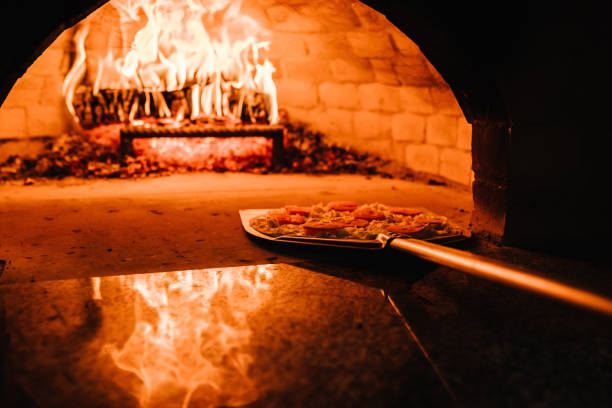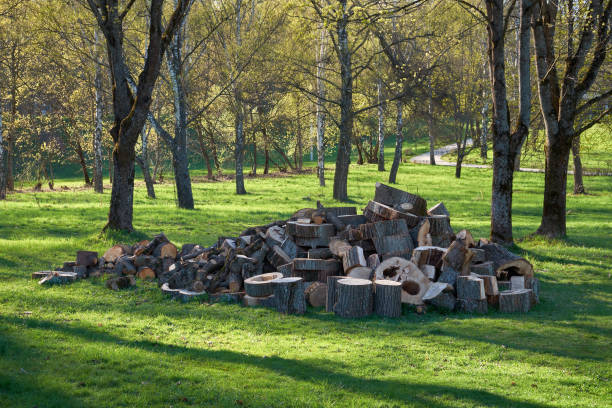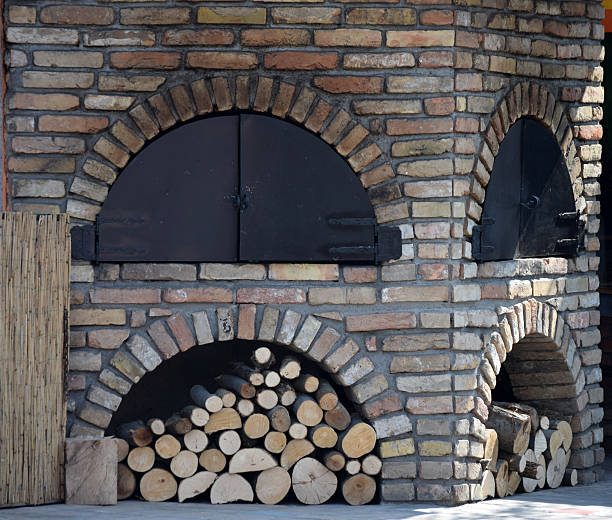An outdoor wood furnace can reduce your monthly heating bill even though the initial investment may be substantial.
Although heating with firewood can be very enjoyable, you might be looking for a simpler solution after having to sweep your floor three times per day and refill the wood stove with firewood every four hours.
keep reading to learn how an outdoor wood furnace work and more about the outdoor wood furnace.
Table of Contents
What is An Outdoor Wood Furnace?
In essence, an outdoor wood furnace is a heater that uses wood as fuel. There have been outdoor wood boilers for a long time. They provide environmentally friendly and energy-efficient home heating.
How Does An Outdoor Wood Furnace Work?
An outdoor wood furnace is positioned between 50 and 150 feet from your home.
The length really just depends on your particular circumstances, but you’ll need to take into account the price and labor of burying the underground tubing as well as heat loss during long runs.
Even though the tubing is insulated, some heat will be lost as the water is circulated between the furnace and the heat exchanger.
Accordingly, you will lose more heat the farther it is from your home, though not a lot.
Keep in mind that these units are very large and that a cement pad will need to be poured to accommodate them as you think about installation options.
A firebox encircled by a water jacket makes up the simplest of the components.
Through an aquastat, the fire heats the water to a predetermined temperature (typically 180 degrees).
The boiler has an aquastat that regulates the water’s temperature safely and at a predetermined level.
When the temperature is too low, the stove opens the air supply feeding air to the fire to raise the temperature.
After reaching the desired temperature, the aquastat shuts off the air supply, putting a damper on the fire and lowering the temperature.
A circulation pump is used to pump the heated water into your home through underground tubing.
The tubing joins to a heat exchanger, where heat is transferred to the installed heating system.
Your existing heating system or domestic water is never combined with the heated water inside the wood furnace.
The heat exchanger is used to transfer all of the heat.

Pros & Benefits of An Outdoor Wood Furnace
Energy Independence
The fact that you are independent of the oil, electric, propane, or gas companies comes first and is frequently what attracts people looking for alternatives. Whether you choose to cut your own wood or purchase it from a nearby firewood vendor, you are in charge and will be the one to supply the hot water and a warm home. In the end, you are in charge, even though taking endless hot showers might cost you one or two logs.
Durable
The kind of steel that was used in the construction of an outdoor boiler is one of the most important things to take into account. In order to prevent corrosion and withstand consistently high temperatures, HeatMasters uses titanium enhanced 409 stainless steel when producing our outdoor boilers. It doesn’t warp or crack, and it also transfers more heat. A good outdoor boiler can last a lifetime if maintained properly.
Clean Burning
In exchange for longer burns, gasification furnaces emit much less pollution. With modern technology, you only need to feed your furnace once or twice a day and an outdoor boiler can burn any kind of wood. When burned properly and with properly-seasoned wood, wood fuel emits the same amount of carbon as decomposing organic matter, making it carbon neutral. Wood is an efficient, economical, and renewable resource. As well as, it spreads almost everywhere.
Less Mess in Your Home
You don’t have to worry about the leaves, bark, insects, and dirt in your home because an outdoor boiler is just that—outside. (Your wife will appreciate it, we assure you.) HeatMasterss G Series Furnaces are UL-listed and CSA-approved for installation in a garage, shop, or other outbuildings so you can stay out of the elements while keeping the mess outside.
Save Time, Money, and Labour
It need not be expensive to heat your home or difficult to live in. For limitless hot water or to add a hot tub, HeatMasters outdoor furnaces can adjust their BTU output during times of low heat demand. You won’t need to check on your furnace constantly if it has a big firebox and home monitoring.
Cons to Outdoor Wood Furnaces
It Still Does Require Some Time and Labour
An outdoor furnace is not going to be the best option if you’re looking for a simple solution. It still needs some work. A minimum of once per day, if not twice, you will need to load your furnace. Wood doesn’t cut itself, so you’ll need to spend time planning, chopping, and stacking wood (a great family activity). To maintain it at peak performance, some simple maintenance is also required.
Requires Well-seasoned Wood
For outdoor furnaces, well-seasoned wood is best. However, properly seasoned wood requires time. Even though wood with a moisture content of over 25% can be burned, the creosote buildup will require more frequent cleaning. Depending on its characteristics, wood needs to be allowed to season for the right amount of time. Some wood can season properly in a year, but some can take much longer. Testing the wood with a moisture meter is the only way to be sure. (which comes with your furnace).
Need Space to Store Wood
Wood needs to be stored properly both before and after seasoning. To keep the wood from drying out while seasoning, the stack must have airflow around it. The wood should ideally be kept out of the snow and rain in your area because standing water creates an environment where rot and mold can grow.
Need Extra Tools
Of course, you can choose to buy your wood locally and still save money, but if you want to do it yourself, you’ll need to make an investment. Chainsaws and log splitters are additional tools needed when felling trees, splitting logs, and moving wood. These supplemental tools can be basic, like an axe and splitting block, or fancy, like a hydraulic log splitter. Whichever method you choose, getting the wood you need for the winter will require some experience and strength.

Purchasing Tips
The Michigan Department of Environmental Quality offers some advice for those considering buying an OWB. The best home heating option in rural areas is a well-designed unit that uses secondary combustion because it burns more effectively. Some more recent models have additional technology to incinerate gas and particulate emissions. They operate much cleaner than most current models and use half to a third less wood to produce the same amount of heat thanks to their higher heating efficiencies. A high-quality unit will cost more, but with OWBs, you definitely get what you pay for. They also listed the following tips:
• Select a unit with a lot of firebricks so it can burn hotter and with better combustion.
• Be a good neighbor and make sure the chimney on your house is at least as high as the stack.
• If the unit’s performance claims seem exaggerated, request evidence.
• Wood-burning appliances should only ever be filled with dry, seasoned wood.
The EPA’s Burn Wise website is another place to look for an effective OWB. For a list of OWB manufacturers who voluntarily submit their products for testing and approval, look for the Hydronic Heaters Program.
Summary
A healthy lifestyle choice is cutting wood. Outdoor wood burners move combustion from inside the house to a secure distance outside, reducing dependence on liquid petroleum, fuel oil, and natural gas. Once you get it right, you can benefit from our most renewable resource for many years to come.


